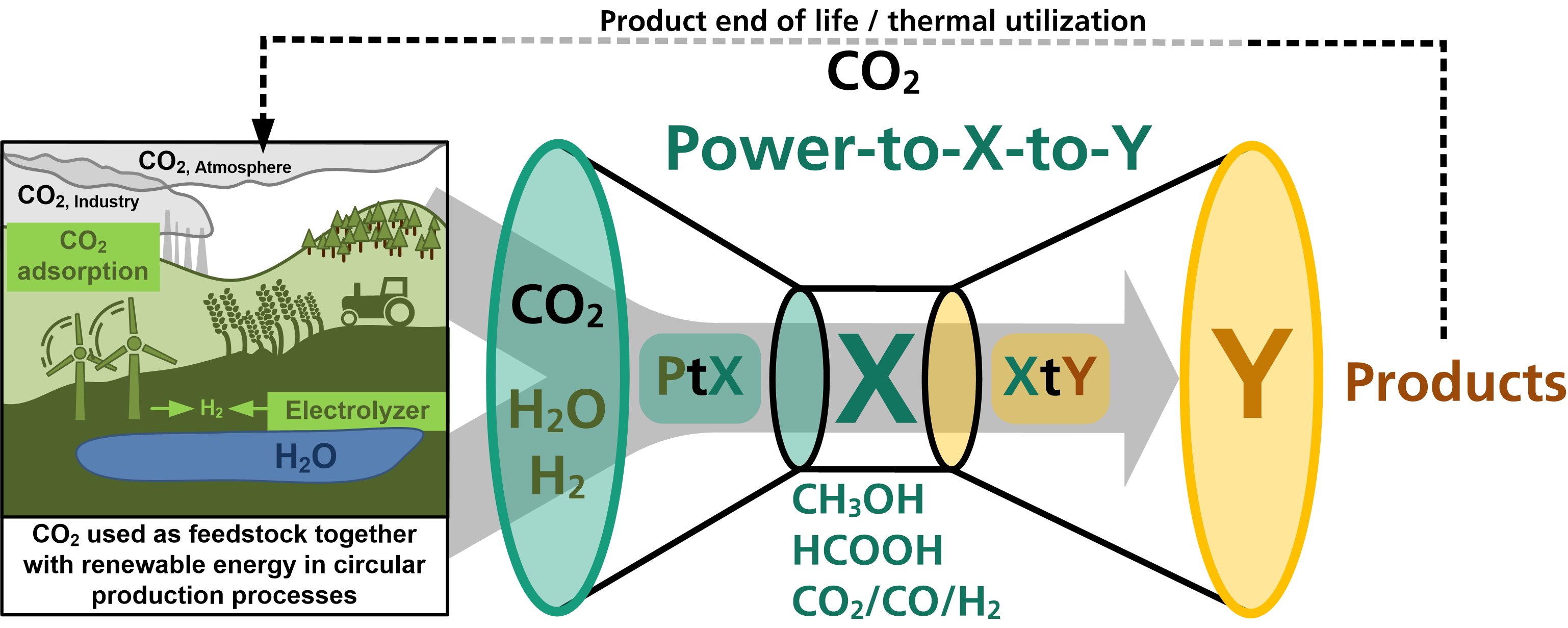As a result of the inclusion of CO2 emissions from the combustion of fossil fuels in the traffic and heating sector in national emission trading, taken effect at January 1, 2021, climate change is now also financially noticeable. Regarding this, open questions remain within the industry: Can the costs for companies triggered by CO2 emission pricing be reduced? Is it possible to decrease CO2 discharge by innovative and biointelligent processes or process chains and alongside making money?
Making money using CO2
CO2 – an almost unlimited “resource“?
The climate gas CO2 is a globally almost unlimited resource in the atmosphere, which can also be extracted from flue gas streams of industrial combustion processes. From the viewpoint of a producing company, a more reliable source of raw material, when atmospheric CO2 is considered, can hardly exist.
To date, the technology of adsorbing atmospheric CO2 from air exists in form of air washers, which for example the Suisse company Climeworks developed recently. Due to the low CO2 concentration (0.04 percent) in the air, the procedure is still energy and cost intensive.
In comparison to the atmosphere, for example, flue gas streams of cement- and steel facilities contain increased CO2 concentrations. Therefore, these point sources provide the opportunity to utilize CO2 as an intermediate in integrated value chains instead of discharging it as a waste product: The challenging waste product of the initial process turns into a useful feedstock for the second process and contributes to added value.
Commercial use of CO2 – the way to go
Here, two economic levers useful for CO2 discharging companies can be identified:
- On the one hand, cash can be saved by actively reducing CO2 emissions.
- On the other hand, CO2 can be used for the production of chemical added-value products and platform chemicals for commercial utilization.
A pioneer company developing such technology concepts is the New Zealand company Lanzatech, which produces bioethanol from steel industries’ synthesis gas streams via gas fermentation. In addition, process cascades, which use CO2 and renewably produced hydrogen gas from water electrolysis for production of intermediates such as methanol or formic acid depict an enormously important approach. These processes are often referred to as power-to-X technologies [1].
The IGB approach: Power-to-X-to-Y
Fraunhofer IGB is extending the power-to-X approach towards the power-to-X-to-Y concept, in which the CO2 derived intermediates are further processed in coupled chemical and biotechnological procedures to more complex and higher-value products (Fig.).
Using these techniques, various synthesis routes are accessible for a broad range of chemical products with increased added-value, relying on CO2 as the primary feedstock. In this way, the urgently wanted path to an era of independence from fossil resources is paved.

Literature
[1] Drünert, S.; Neuling, U.; Timmerberg, S. & Kaltschmitt, M. (2019) Power-to-X (PtX) aus „Überschussstrom“ in Deutschland – Ökonomische Analyse, Zeitschrift für Energiewirtschaft 43: 173-191
 Fraunhofer Institute for Interfacial Engineering and Biotechnology IGB
Fraunhofer Institute for Interfacial Engineering and Biotechnology IGB